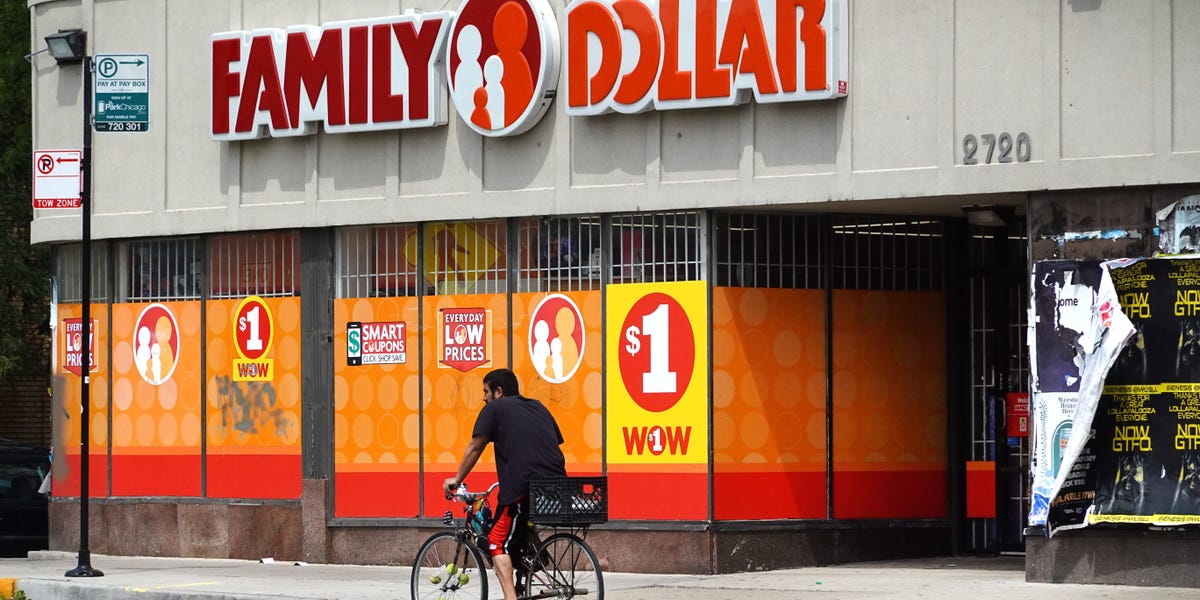“With the acquisition of Family Dollar Stores, Dollar Tree will become a leading discount retailer in North America,” he said.
A decade on, Sasser’s rosy prediction has failed to become a reality. Analysts have described Family Dollar as the problem child of Dollar Tree and say it’s generally been a drag on company earnings.
On Tuesday, Dollar Tree announced the closure of nearly 1,000 Family Dollar locations over the next few years.
GlobalData Retail analyst Neil Saunders told Business Insider this was “the coup de grâce” in its “botched acquisition” of the Family Dollar chain, suggesting that its moment of reckoning has come.
Family Dollar stocks a wide assortment of grocery goods.
Business Insider/Mary Hanbury
The problem child
When Dollar Tree acquired Family Dollar in 2015, it was clear that some work would be required to improve the chain, but experts say it likely underestimated the extent of the improvements needed.
“At the time, the main issues were with poor store locations — which is hard to understand unless you are in the weeds of the business — and a lack of operational discipline within the supply chain,” Saunders told BI.
While Dollar Tree has had some success in refreshing Family Dollar’s stores, improving its price points, and introducing more private-label goods to its assortment, it hasn’t been enough, he said.
“Family Dollar remains a laggard in the value segment. Its core shoppers are not particularly loyal and tend to use it out of convenience more than anything else,” he added.
Plus, it’s clear that supply chain issues and messy stores still plague the business.
In 2022, Family Dollar was forced to close several stores temporarily and permanently shut down a distribution center after federal investigators found a rat infestation at the facility. This ultimately led to it paying a $42 million fine.
While store closures won’t bring success, Saunders says, they help reduce losses; 1,000 closures translates to about 12% of its total store count.
And the closures will likely be celebrated by investors. UBS analysts recently estimated in a note to clients that the chain could generate $100 million in improved operating profits by closing or converting the bottom 10% of its stores.


